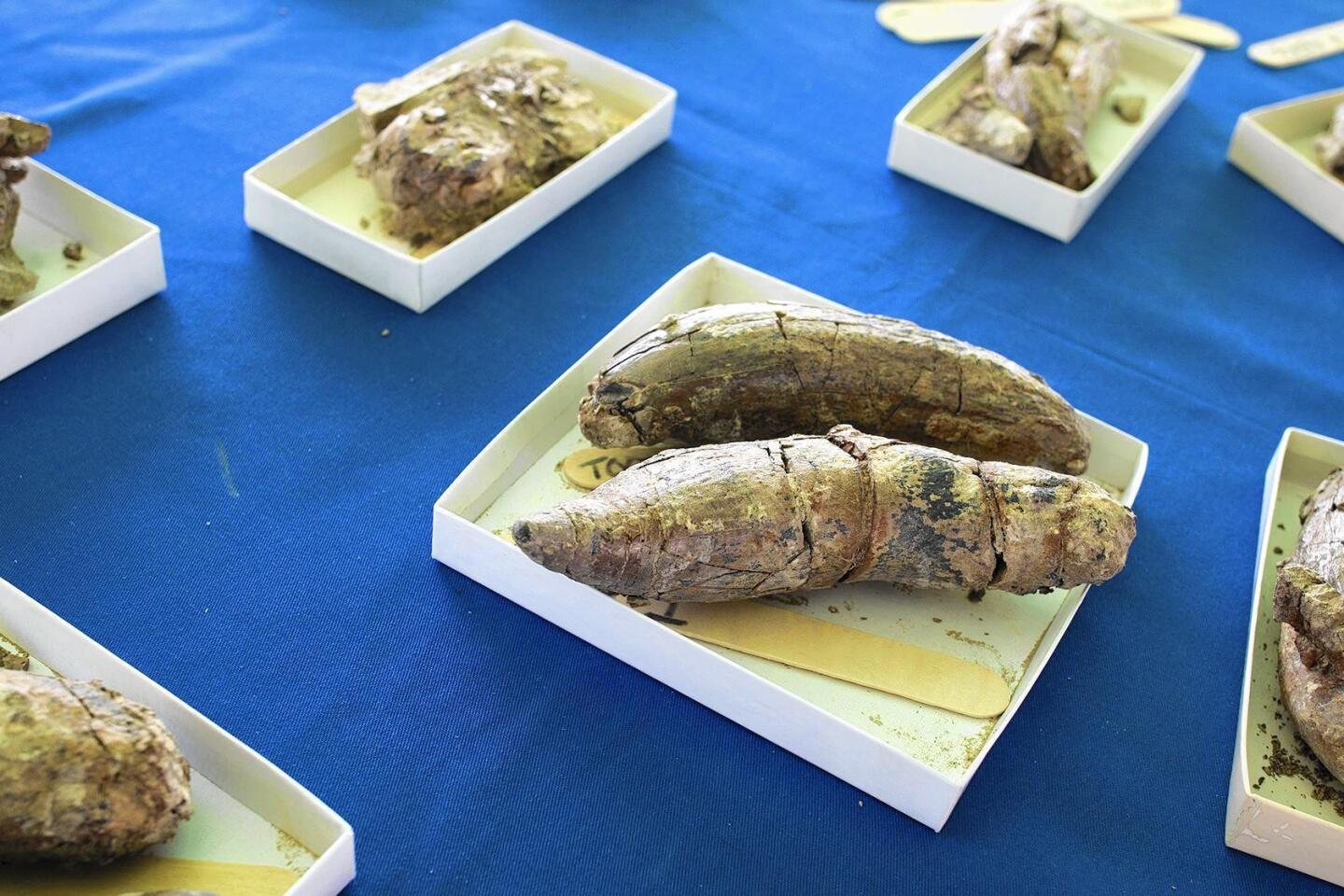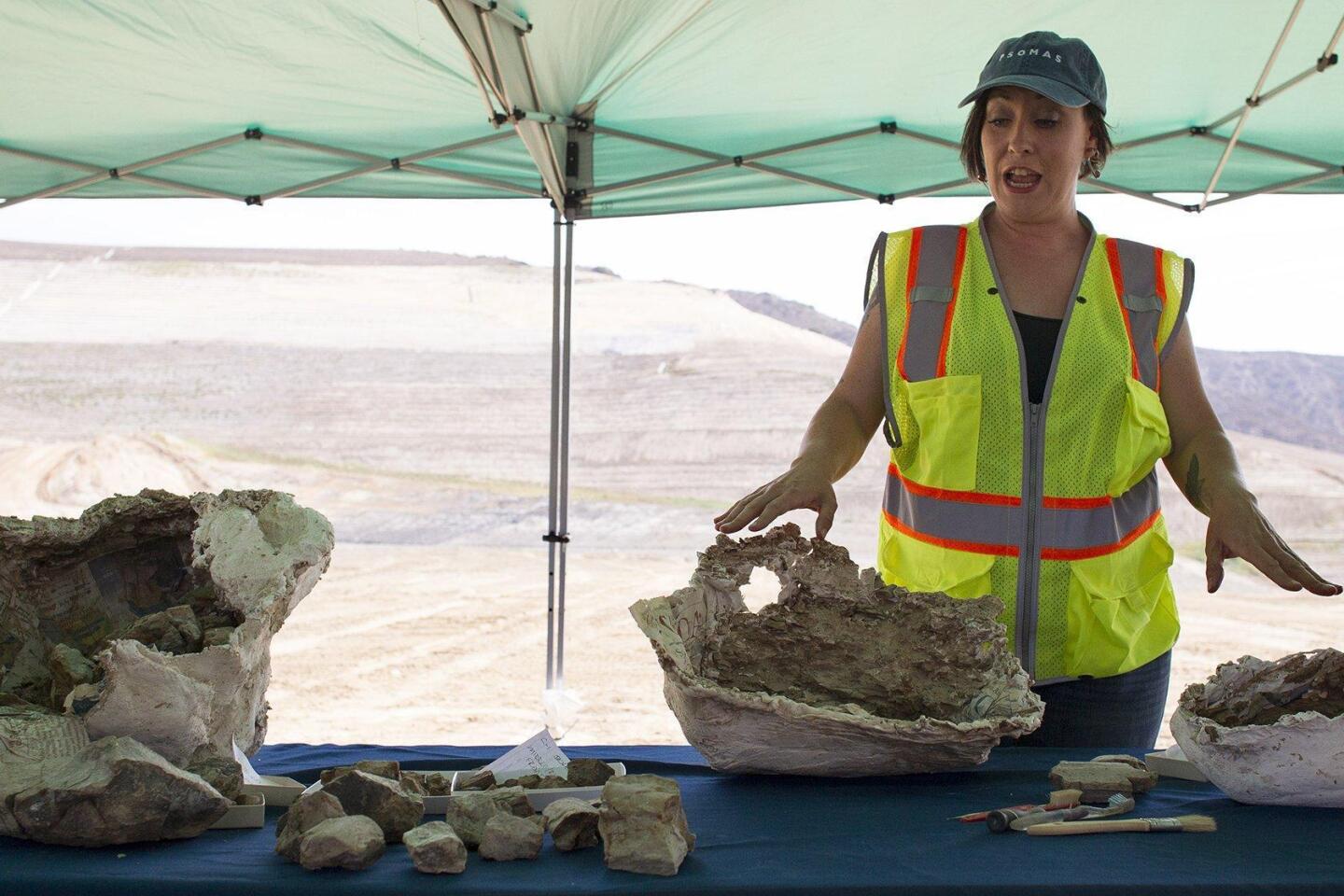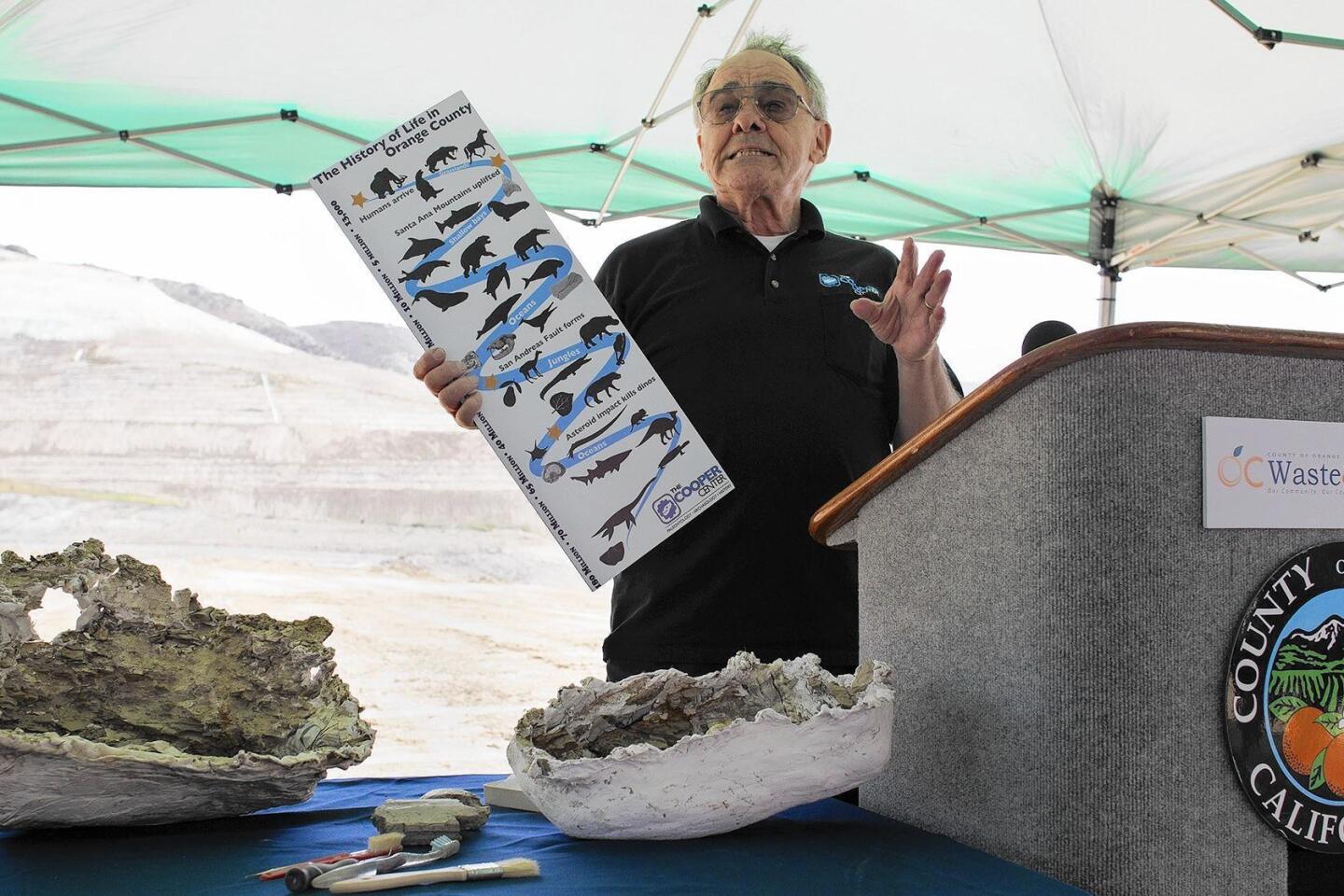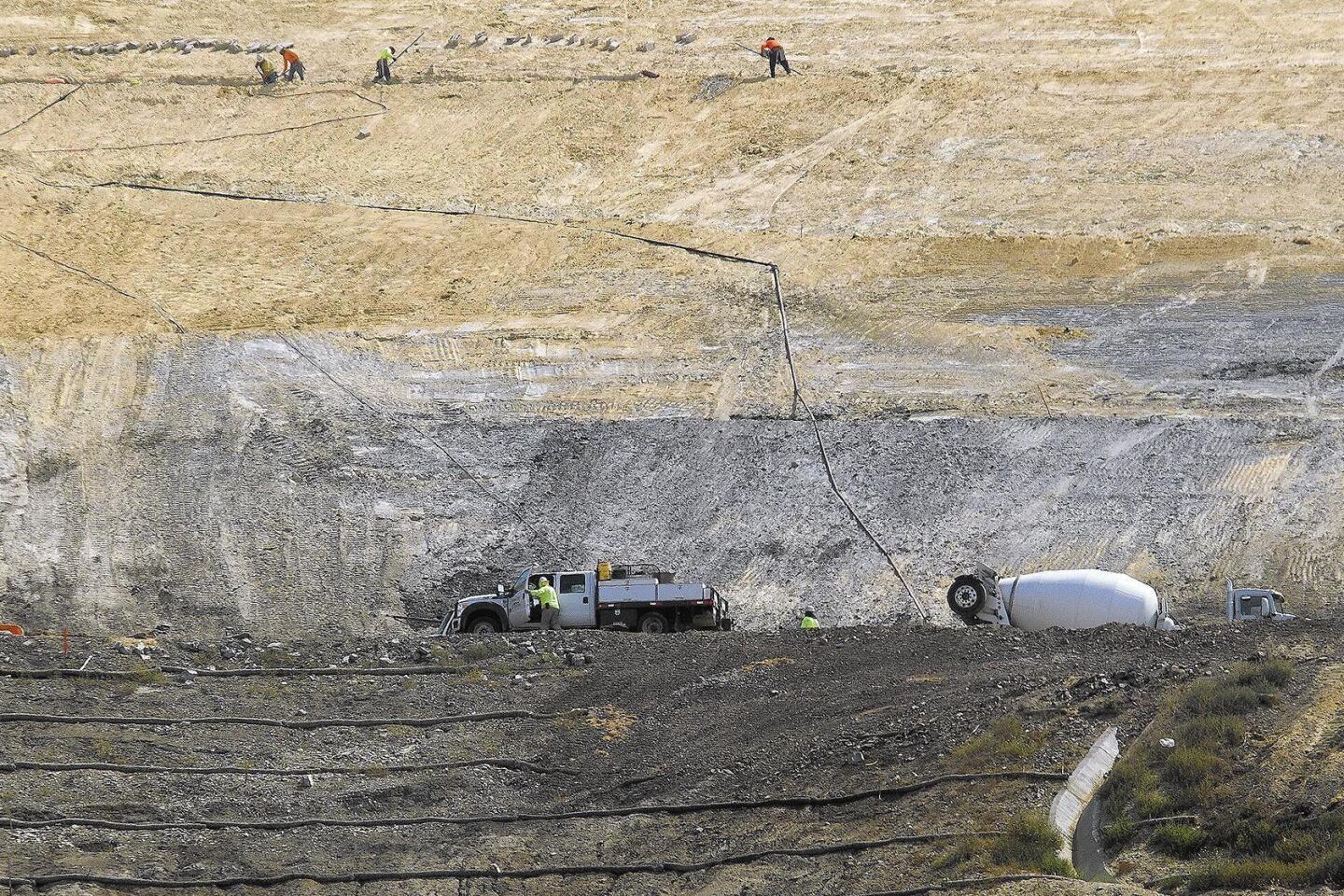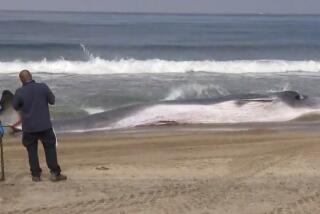Sperm whale fossils up to 12 million years old unearthed at Irvine landfill
More than 1,200 feet up on a hillside in Irvine probably isn’t the first place you’d expect to find the final resting place of a 40-foot sperm whale, but that’s what Melissa Macias stumbled upon last month.
The paleontologist with Santa Ana engineering contractor Psomas noticed something unusual while doing a site survey May 20 at the Frank R. Bowerman Landfill.
“I was walking down this hillside. I found a bone outcropping. I followed it and there was more bone and more bone, and then the teeth,” Macias recalled. “I knew that it was something big, something exciting. I didn’t really know what it was at the time.”
The find turned out to be fossils — parts of a skull, part of a jawbone, a flipper bone and 18 mostly intact teeth — from a sperm whale estimated to have lived 10 million to 12 million years ago.
The remains were unveiled to the media Tuesday morning at the landfill.
Join the conversation on Facebook >>
“Usually you don’t find this many elements,” Macias said. “It was really exciting, especially when we found that first really intact tooth.”
The constant land clearing at Bowerman has previously uncovered other marine fossils tens of millions of years old, such as shark teeth and giant barnacles.
But the whale discovery is unusual.
“I’m kind of surprised we haven’t found other ones because sperm whales are a rather common animal today,” said Jere Lipps, director of the Cooper Center, an archaeology and paleontology research institute founded to collect, study and manage artifacts collected in Orange County. “And I would expect it was more abundant that what we actually have evidence for.”
So how do whale fossils end up being found 1,272 feet above sea level and 15 miles from the shoreline?
The answer lies in eons of shifting geography.
Ten to 12 million years ago, what is now Irvine and up to 50 miles inland was under ocean water, said Psomas senior paleontologist Mark Roeder. Remains of marine animals fossilized in sediment were pushed higher through geologic forces.
“When the Santa Ana Mountains went up along fault lines, all these sediments that were buried were brought up, and that’s what we see today,” Roeder said. “We have a layer cake of formations out here, from different ages.”
The landfill buries 7,000 tons of trash daily, six days a week, Bowerman manager John Tzeng said.
As quickly as the tonnage is covered, new areas are excavated, with fossil experts contracted to examine each clearing.
“This is an important process,” Tzeng said. “The entire landfill is not just providing a place for disposal. This is a live classroom in a sense.”
The whale fossils will be studied at the Cooper Center, which operates in a partnership between Orange County and Cal State Fullerton.
“We take the material we prepare and do exhibits for the public in different venues,” including Bowerman, Cal State Fullerton, public libraries and county courthouses, Lipps said.
Morrison is a contributor to Times Community News.
ALSO
Costa Mesa council to discuss putting own marijuana issue on ballot
The fairgrounds memorial for farm workers is under renovation only 9 months after its unveiling
More to Read
Sign up for Essential California
The most important California stories and recommendations in your inbox every morning.
You may occasionally receive promotional content from the Los Angeles Times.
